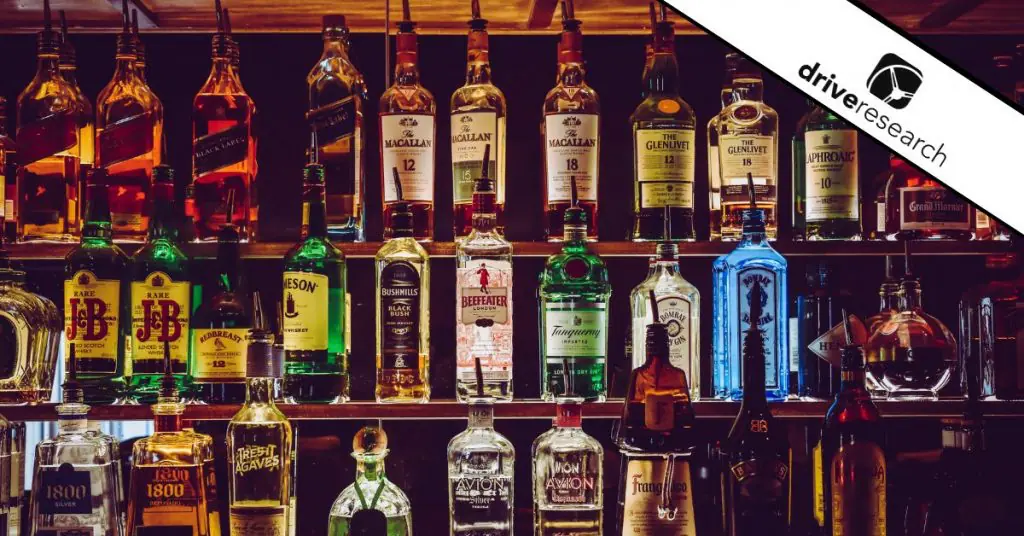
Market research is a vital tool for alcohol brands seeking to understand their target consumers, identify emerging trends, and make data-driven decisions in a highly competitive industry.
With ever-evolving consumer preferences and a dynamic market landscape, conducting thorough research is crucial to gain a competitive edge.
From surveys and focus groups to observational research, this blog post explores the various market research methods available to alcohol brands and highlights their value in shaping product development, marketing strategies, and overall brand success.
Value of Conducting Alcohol Beverage Market Research
Conducting alcohol beverage market research provides valuable insights and information that can benefit businesses operating in the industry.
Here are some of the key reasons why conducting such research holds significant value:
1. Gain a better understanding of alcohol consumers
Market research for alcohol brands helps businesses gain a deeper understanding of consumer preferences, behaviors, and trends.
This includes insights into consumer demographics such as:
- Their purchasing habits
- Brand preferences
- Consumption patterns
- Factors that influence their decision-making processes
Understanding consumers enables businesses to tailor their products, marketing strategies, and overall brand positioning to effectively target their desired audience.
2. Data-driven product development
Market research helps identify gaps or unmet needs in the alcohol beverage market, allowing businesses to develop and introduce new products or improve existing ones.
For instance, by studying consumer preferences, tastes, and emerging trends, companies can create innovative beverages that cater to evolving consumer demands.
This approach to data-driven decision-making enhances the chances of developing successful products that resonate with consumers and gain a competitive advantage.
3. Evaluate your competitors
By analyzing the market landscape, alcohol brands can assess their relative strengths and weaknesses compared to other players.
This information helps identify opportunities for differentiation, pricing strategies, packaging innovations, promotional tactics, and potential areas for collaboration or partnerships.
Additionally, understanding the competitive landscape is crucial for businesses to stay relevant and make informed decisions.
Recommended Reading: Ultimate Guide to Conducting Competitive Assessments
4. Enhance your marketing and communication strategies
Effective marketing and communication are critical for the success of alcoholic beverage brands. Fortunately, market research methodologies such as ad concept testing and campaign evaluation surveys help identify the most effective channels, messaging, and promotional activities to reach and engage target consumers.
It also provides insights into consumer perceptions, brand awareness, and preferences, helping businesses develop compelling marketing campaigns and establish a strong brand image.
Types of Market Research for Alcohol Brands
There are several types of market research methods that alcohol providers and distributors can employ to gather insights and make informed decisions.
Here are some common types of market research for alcohol brands:
- Online surveys
- Focus groups
- In-depth interviews
- Observational research
Let’s explore each of these options further. Or, for a brief synopsis, watch the video below.
Online surveys
Surveys are a popular market research method used to gather quantitative data from consumers. Plus it is a cost-effective solution for collecting quick and high-quality insights.
Alcohol brands can conduct online or offline surveys to collect information about consumer preferences, behaviors, attitudes, and purchasing habits.
Additionally, our online survey agency has used surveys with alcohol brands to cover a wide range of topics, such as brand perception, product satisfaction, pricing, packaging, and consumption patterns.
Focus groups
Focus groups involve gathering a small group of individuals (typically 6-12 participants) in a controlled setting to discuss specific topics related to alcoholic beverages.
This qualitative research method allows brands to delve deeper into consumer opinions, motivations, and experiences. More specifically, focus groups provide valuable insights into consumer perceptions, reactions to new product ideas or concepts, brand positioning, and packaging design.
Through interactive discussions, alcohol brands can gain a more comprehensive understanding of consumer preferences and preferences.
In-depth interviews
In-depth interviews or IDIs involve one-on-one conversations between researchers and consumers. These one-on-one interviews can be conducted face-to-face, over the phone, or via video calls.
Similar to focus groups, these interviews provide an opportunity for alcohol brands to explore consumers’ thoughts, experiences, and emotions in greater detail.
Observational research
Lastly, observational research involves observing and recording consumer behavior in natural settings. For alcohol brands, this could involve observing consumers’ purchasing decisions and consumption patterns at bars, restaurants, liquor stores, or events.
The benefit of observational research is that it provides real-time insights into consumer choices, interactions with brands, and contextual factors that influence their decision-making.
This method can uncover valuable information that may not be captured through self-reported data.
Example Alcohol User Market Research Study
If you work in the alcohol industry, you’re probably well aware of the craze around hard seltzer. For context, studies found that over half of all alcohol consumers in the United States drink hard seltzer at least once a week (55%).
As a result of this staggering percentage, many new brands are popping up every day with a new twist hard seltzer. Some claim to have fewer calories, fewer carbs, no sugar, more antioxidants – you name it.
The rise in competition can leave brands with many questions as to how they can better market their product and make it the preferred beverage of choice.
For this reason, many alcohol brands are conducting market research with target consumers to collect data and feedback on their drinking behaviors, preferences, and attitudes.
Take for example a market research project we conducted with a major spiked sparkling water brand. We detail the objectives, solutions, and approach of the research study below.
Objectives of the Alcohol Brand
The alcohol brand wanted to generate feedback from target consumers to learn more about their preferences and lifestyles while drinking.
- How does hard seltzer fit into consumers’ lifestyles?
- Where are alcohol consumers drinking it?
- How does sparkling seltzer make them feel?
- Are there certain occasions when they exclusively drink it?
- How is hard seltzer different from beer or wine?
- What is their willingness to try new flavors?
The answers to these questions would help the alcohol brand market its products better and ultimately increase sales.
Solution: Market Research Study with Alcohol Consumers
Based on the objectives of the hard seltzer brand, our market research company recommended a hybrid qualitative study including the recruitment of 12 participants.
The alcohol market research was conducted in three markets including Atlanta, GA, Syracuse, NY, and Detroit, MI.
Phase One: Recruit 12 qualified target consumers per market.
- Step 1: They will be sent a link to complete a brief online Lifestyle Survey (15 mins) prior to participating in an online board.
- Step 2: Log into and participate in an online bulletin board, logging in on at least 3 of the 4 days it runs.
Phase Two: In-depth Phone Follow-Up Interview Recruitment.
- Schedule a 15-minute telephone interview with each of the Phase 1 participants.
Phase Three: In-home Visits Recruitment.
- Based on Phase 1 and 2 findings, the client selected 3 target consumers per market to be invited to “host” a 2-hour social gathering in the evening (at home or other location TBD) with 2-4 other close friends with whom they typically hang out.
Target Consumers for the Alcohol Beverage Market Research
As with every market research study, it is important participants match the criteria of your target audience.
For this specific in-home usage test, the alcohol brand was looking for participants to match the following criteria:
- Pass a standard security screener with no sensitive occupations.
- No alcohol or adult beverage research within the past 12 months.
- Must be between 25 and 42 years of age.
- Must be familiar with sparkling water or seltzer (non-alcoholic).
- Must be familiar with hard sparkling water or seltzer (alcoholic).
- Must be primarily (or equally responsible) for alcoholic beverage purchase decisions.
- Must be open to purchasing hard sparkling water (containing alcohol) in the future.
- Must have a minimum high school education.
- Must have a minimum household income of $40,000.
- Must be outgoing and comfortable with group participation and trying new products.
Furthermore, our market research company was tasked with recruiting a specific number of participants based on their drinking habits and preferences.
The alcohol market research was separated into different groups such as:
- Sparkling water drinkers: Recruit at least 4 who drink sparkling water and at least 1 target alcohol product.
- Hard sparkling water drinkers: Recruited at least 6 who drink hard sparkling water or seltzer.
- Light beer drinkers: Recruited at least 4 who drink light beer and at least one target alcohol product.
- Flavored malt beverage drinkers: Recruited at least 4 who drink flavored malt beverages and at least one targeted alcohol product.
- Mixed drink or spirits drinkers: Recruited at least 4 who drink mixed drinks and/or spirits and at least one targeted alcohol product.
- Wine drinkers: Recruited at least 4 wine drinkers in the recruit.
Approach: Recruiting and Scheduling Various Types of Drinkers
Our market research firm follows a proven, streamlined approach to finding and recruiting participants for qualitative and quantitative research.
While we are a full-service market research firm and can handle end-to-end project management of the entire study, our team was specifically hired for our qualitative recruiting services.
The process of recruiting various types of drinkers included the following steps.
1. Signed proposal
A signed proposal is the first step to any type of market research project. It is a key deliverable that outlines important details of the study such as approach, timeline, and costs.
Market research proposals also give you a better idea of what research firm you’d like to move forward with as it gives an inside look into what it would be like working with their team.
2. Kickoff meeting
Shortly after receiving a signed proposal, our market research firm schedules a brief kickoff call. During this meeting, our team learns more about your unique objectives, target audience, and what you hope to use the research for.
For example, the alcohol brand in this case study was looking to expand its product line of hard seltzers.
They planned to use the results of the study to fuel their new product development efforts such as marketing, pricing, can design, taste, and more.
3. Design a screener survey
A recruitment screener is an important component in any recruitment project. It asks key questions that help qualify or disqualify a participant for the research study.
For example, questions included in the alcohol market research study included:
- Please tell me which of the following beverages have you consumed in the past month? (Read list, check all that apply).
- On average, how many total servings of alcoholic beverages do you drink each week?
- Who selects the brands/types of alcoholic beverages you drink?
- How familiar are you with sparkling water (non-alcoholic carbonated water such as LaCroix, Perrier, Poland Springs, San Pellegrino which may be flavored or non-flavored)?
- If you had the opportunity, would you be open to drinking sparkling water?
- What brand(s) of sparkling water (non-alcoholic carbonated water) have you ever seen or heard of? (Read list, check all that apply).
- When was the last time, if ever, you consumed the following brands of sparkling water?
4. Launch the survey and collect the sample
The survey screener was launched on several different platforms to reach consumers in the three market areas (Atlanta, GA, Syracuse, NY, and Detroit, MI). Being that our firm is based in Syracuse, NY many of our social media followers are from around the area.
Therefore, we were able to leverage our Facebook and Twitter company profiles to generate interest with organic social media posts.
In addition, to this approach, our market research agency also specializes in finding participants through paid Facebook ads. This is how we sourced samples for all three markets.
For a more detailed approach to social media recruiting, read [Ultimate Guide] How to Use Social Media to Find Research Participants.
5. Call and re-screen qualified participants
After generating a large sample of potentially qualified participants from the screener survey, Drive Research conducted re-screening calls to select people.
Doing so gives our team the opportunity to verify answers, establish a trusted relationship, and provide more details about the study.
Learn more by reading The Importance of Re-screening Phone Calls When Recruiting Participants for Market Research.
6. Schedule the participant for the in-home usage test
A total of 12 people were chosen to participate as well as 2 alternates from the online screener. Additionally, 3 participants were chosen for the tasks in Phase Three.
It was requested that the Phase Three participants would be a female host (25 to 32 years of age), a female host (33 to 42 years of age), and a male host (25 to 32 years of age).
Final Thoughts
In summary, conducting market research for alcohol brands is valuable for many reasons. It helps brands and distributors understand consumers, develop innovative products, analyze the competition, refine marketing strategies, and more.
By leveraging insights from online surveys, focus groups, IDIs, or other types of market research, companies can make informed decisions, enhance their competitiveness, and drive growth in a dynamic and evolving industry.
Conduct Alcohol Market Research with Our Team
Drive Research is a full-service market research company specializing in the food and beverage industry. Our team has partnered with alcohol brands, breweries, and wineries from across the country to execute both qualitative and quantitative research.
Interested in learning more about our services? Contact Drive Research today.



